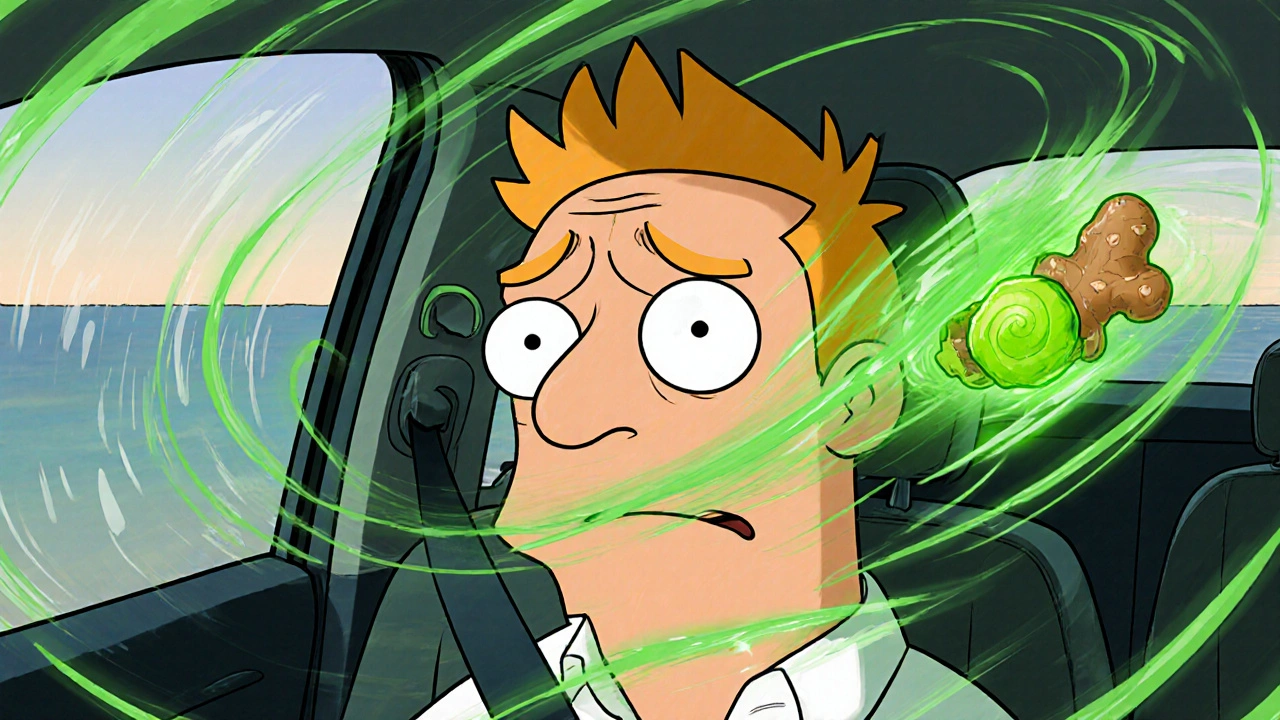Car Sickness Remedies: Simple Fixes That Actually Work
When you or your child feels sick in the car, it’s not just annoying—it’s exhausting. Car sickness, a type of motion sickness triggered by conflicting signals between your eyes and inner ear. Also known as motion sickness, it’s not a sign of weakness—it’s a common biological response that affects up to one in three people, especially kids and pregnant women. You don’t need to avoid car rides. You just need the right tools.
Most remedies for car sickness fall into three buckets: what you do before the trip, what you do during it, and what you take (if anything). The best solutions are simple, cheap, and don’t rely on pills. Sitting in the front seat helps because you see the road ahead, which syncs your eyes with your inner ear. Looking out the window beats staring at a phone or book. Fresh air works better than closed windows—crack it open, even if it’s cold. Ginger, in chewable form or tea, has been shown in multiple studies to reduce nausea without drowsiness. Peppermint oil on the temples or under the nose can also calm the stomach, and many parents swear by it for kids.
Some fixes are more about timing and environment. Avoid heavy meals right before driving, but don’t go on an empty stomach either. A light snack like crackers helps. If you’re driving, focus on the horizon, not the dashboard. If you’re a passenger, try closing your eyes or taking a nap—this cuts the sensory conflict. For kids, bring a favorite toy or blanket to distract them, and stop for breaks every hour. Even a five-minute walk can reset their system. Don’t rely on wristbands like Sea-Bands unless you’ve tested them first—they help some, do nothing for others.
Medications like dimenhydrinate (Dramamine) or meclizine (Bonine) work, but they make you drowsy and aren’t safe for toddlers under two. Scopolamine patches are strong but require a prescription and can cause dry mouth or blurred vision. For most people, non-drug fixes are just as effective and far safer. The goal isn’t to eliminate motion sickness completely—it’s to make car rides bearable, even pleasant. The good news? With the right approach, you can travel without dread.
Below, you’ll find real stories and tested tips from people who’ve dealt with this every day—parents, travelers, and even drivers who once hated long trips. No fluff. No guesswork. Just what works.
How to Prevent Motion Sickness on Your Next Road Trip
Learn practical, science-backed ways to prevent motion sickness on road trips-from seat choice and fresh air to ginger snacks and acupressure bands. No pills needed unless you want them.
